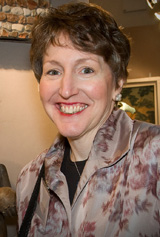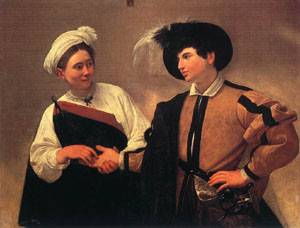Maria Ann Conelli, director of the American Folk Art Museum, has quit her post, and that suggests one of two things: either the troubles at the museum go deeper than previously acknowledged, or she can not figure out a way to solve them. Or both.
 Conelli (right) posted her resignation, effective in July, on the museum’s website. She said she was leaving the museum “in the good hands of our Deputy Director, Linda Dunne, and our Board leadership, who will continue to uphold our mission of educating with our world-class collection of art.”
Conelli (right) posted her resignation, effective in July, on the museum’s website. She said she was leaving the museum “in the good hands of our Deputy Director, Linda Dunne, and our Board leadership, who will continue to uphold our mission of educating with our world-class collection of art.”
The folk art museum has been in trouble for ages. As Bloomberg points out in its recap of the situation, it has defaulted on interest payments due on $31.9 million in bonds, having missed a $3.7 million payment in January. At the time, it said it did not expect to make required payments “in the foreseeable future.”
The folk art museum recently had a huge success overseeing the exhibition of red-and-white quilts owned by Joanna S. Rose at the Park Avenue Armory. It attracted 5,000 visitors in the course of six days. But the Rose family paid for that exhibition, which was free to the public. The museum’s other exhibitions — also celebrating quilts — have apparently not been big draws. Nor has the museum been able to attract new donors.
In February, the museum told Bloomberg News that it would not sell works from its collection to pay down its debt, and said it expected to have a balanced budget for the fiscal year ending June 30. According to that article, the museum’s forebearance agreement with ACA Financial Guarantee Corp., which had provided a $853,425 cash injection for the museum, allowing bondholders to be paid interest due them, expires June 30.
Which probably means another cash crunch — for payments due in July.
It remains to be seen whether any members of the board of trustees will come to the rescue.
On a related front, the folk art museum was also recently forced to drop out of a planned exhibition at the Venice Biennale. According to Art in America magazine, Benetton, the exhibition sponsor, pulled out as the benefactor of Vision and Vernacular: Eight African American Artists in Venice, which was to have been held at the Fondaco dei Tedeschi, a property owned by the Benetton Group near the Rialto Bridge. The show was curated by Carlo McCormick and Martha V. Henry, and “would have featured works by Outsider artists Lonnie Holley, Mr. Imagination (Gregory Warmack), Charles Lucas and Kevin Sampson, and site-specific murals by street artists Blade (Steven Ogburn), Daze (Chris Ellis), Quik (Lin Felton) and Sharp (Aaron Goodstone).”
A in A quoted McCormick as saying that Benetton and the museum “bickered every step of the way.” He added that he thought the disagreement was over who would pay for what.
I haven’t dug deeply, with my own reporting, into this museum’s troubles, but what I have heard from credible sources is that all the troubles began with a poorly planned, over-optimistic expansion into its new building several years ago. Might the museum save itself by selling that, and returning to its original location near Lincoln Center — which is now a satellite museum? It’s worth considering. If, of course, it can sell the new building near the Museum of Modern Art.
UPDATED, 5/11: The museum has reached an agreement to sell that new building to the Museum of Modern Art. Here’s the open letter from board president Laura Parsons announcing the sale.
Photo Credit: Courtesy of the American Folk Art Museum

 This is only the second time the painting has been shown in the U.S.,
This is only the second time the painting has been shown in the U.S., 


